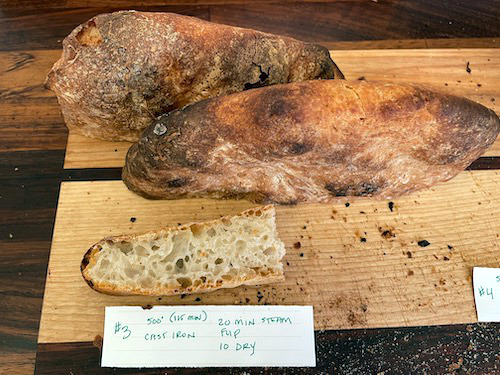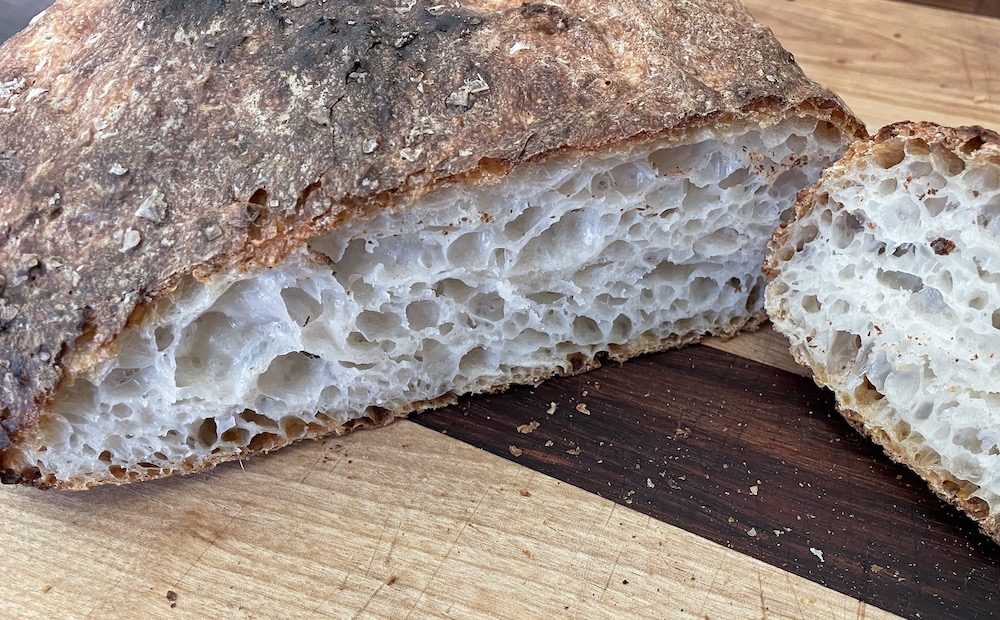Big Holed Artisanal Bread
Adapted from Baking Illustrated page 100.
April 2021 - I've spent the last year looking for a recipe to make a great restaurant bread at home. Big air holes in an open crumb, where the gluten forms feather-like strands of cool, damp, chewy goodness. Add a crunchy, brittle crust and I would be completely satisfied.
I've tried several recipes for chiabatta bread and had some good chews, but I wasn't able to always repeat it. I re-read On Food and Cooking to understand more about why recipes call for certain steps. I watched Michael Kalanty lectures as part of a Great Courses series on baking bread - his lectures were astoundingly informative.
Eventually Sherry gave me a copy of the Baking Illustrated chiabatta recipe that forms the basis of this. Their recipe is good, but didn't yield the big holes I wanted. I increased the hydration to 80% added a few steps for flavor and we now have the recipe below. It is repeatable and fabulous. I hope you enjoy it too.
August 2021 - Seeking wisdom I wrote to Michael Kalanty and he replied! He seems like a nice guy and an excellent teacher. I was making a list of questions when he recommended his own book How To Bake Bread: The Five Families of Bread. Wow, a great read. This book answered almost all my questions and gave me new tips that I've added to this recipe to make it even better. For instance, I used to call for a baking stone, but my latest experiment shows that to be unnecessary.
You will need some tools to make this easier:
- A stand mixer, like a Kitchen Aid, with a paddle
- At least one metal bench scraper, preferably two
- Two sheet pans
- Plastic bowl scraper
- Non stick spray (like PAM)
- Spray bottle with water
And remember, ALWAYS - measurements by weight!

One Early Experiment
